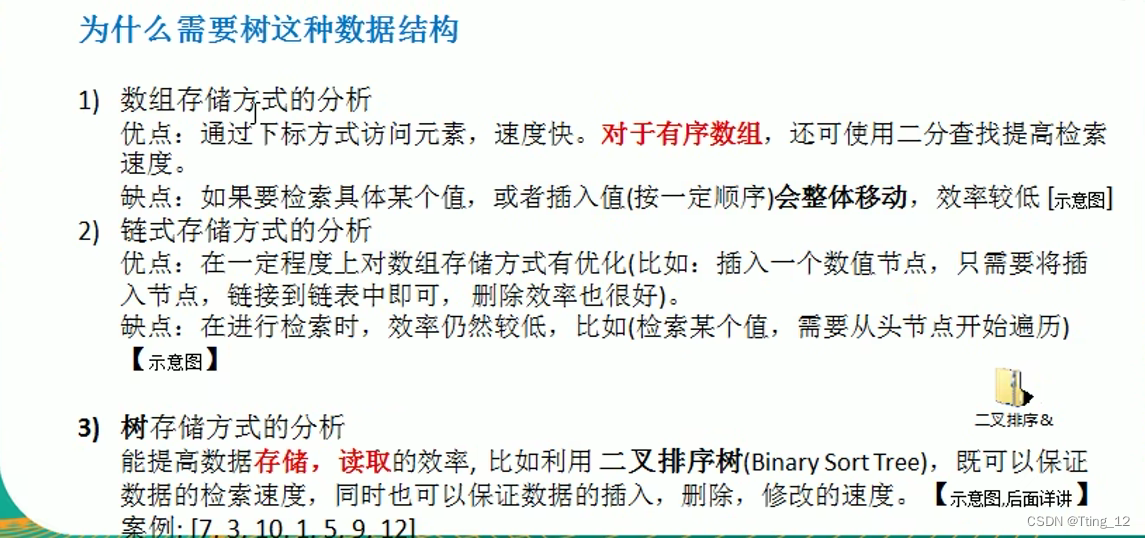哈希表
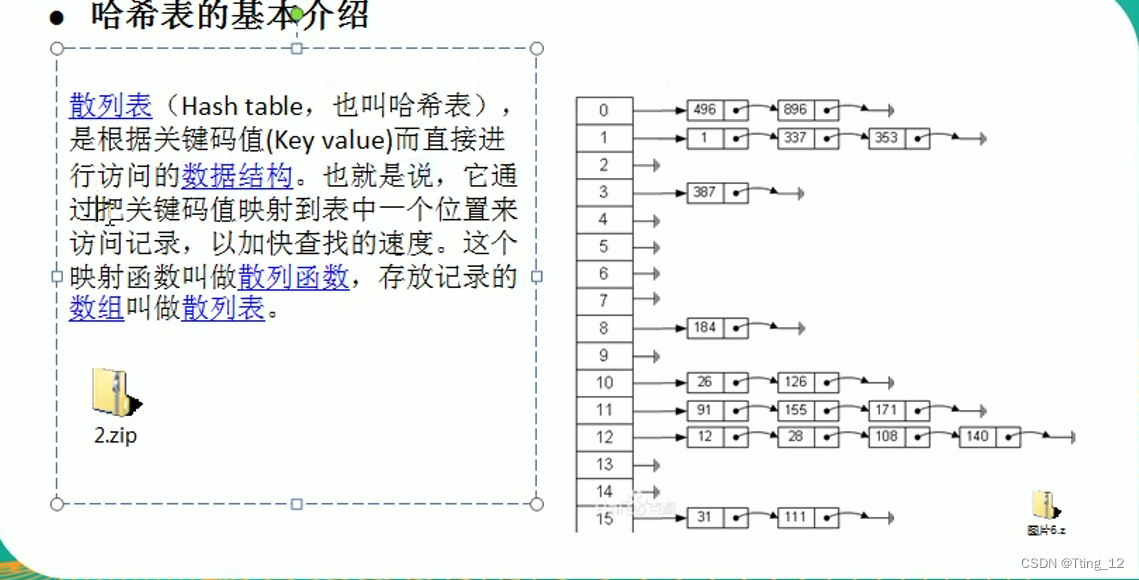

google公司的一个上机题
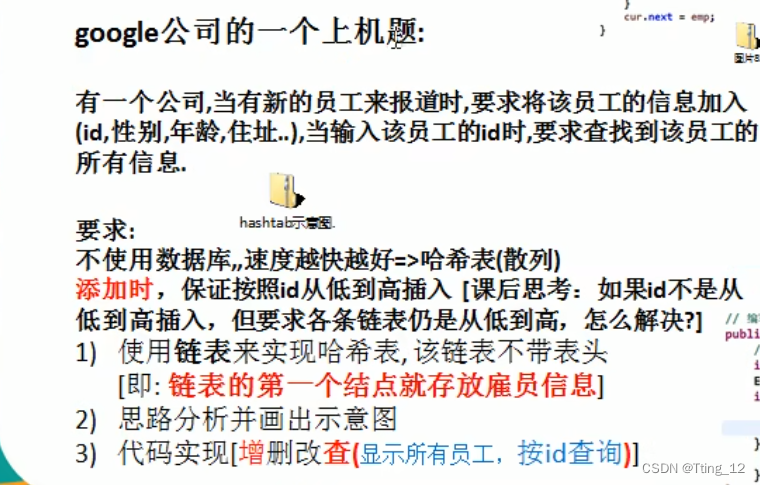
思路分析:
Emp 表示一个个雇员节点,里面有id name next属性
EmpLinkedList 表示链表 里面有head 直接表示第一个Emp,根据第一个Emp.next 接下去
HashTab 里面有一个数组,可以装入EmpLinkedList元素
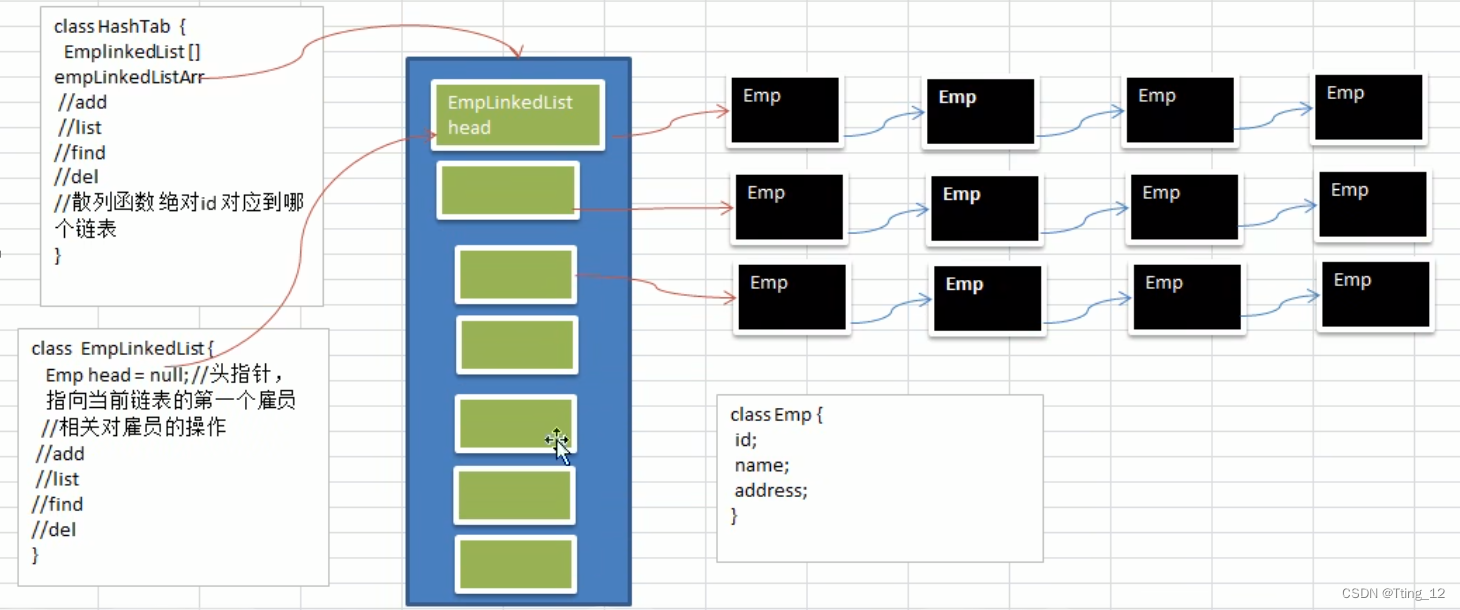
package com.tt12.hashtab;
import java.util.Scanner;
public class HashTabDemo {
public static void main(String[] args) {
//测试添加和遍历功能
HashTab hashTab = new HashTab(7);
//简单菜单
String key = "";
Scanner scanner = new Scanner(System.in);
while (true) {
System.out.println("add : 添加雇员");
System.out.println("list : 显示雇员");
System.out.println("exit : 退出程序");
key = scanner.next();
switch (key) {
case "add" :
System.out.println("输入id");
int id = scanner.nextInt();
System.out.println("输入名字");
String name = scanner.next();
Emp emp = new Emp(id,name);
hashTab.add(emp);
break;
case "list" :
hashTab.list();
break;
case "exit" :
scanner.close();
System.exit(0);
default:
break;
}
}
}
}
//哈希表 管理多条链表
class HashTab {
public EmpLinkedList[] empLinkedListArray; //数组里面放的链表
public int size; //表示共有多少条链表
//构造器
public HashTab(int size) {
this.size = size;
//初始化链表数组
empLinkedListArray = new EmpLinkedList[size];
//数组里面的元素是null 还需要初始化链表开辟内存
for(int i = 0; i < size; i++) {
empLinkedListArray[i] = new EmpLinkedList();
}
}
//添加
public void add(Emp emp) {
//根据员工的id得到该员工应该添加到哪条链表
int empLinkedListNo = hashFun(emp.id);
//添加到对应链表
empLinkedListArray[empLinkedListNo].add(emp);
}
//编写散列函数,使用一个简答的取模法
public int hashFun(int id) {
return id % size;
}
//遍历所有的链表
public void list() {
for(int i = 0; i < size; i++) {
empLinkedListArray[i].list(i);
}
}
}
//表示一个雇员
class Emp {
public int id;
public String name;
public Emp next;
//构造器
public Emp(int id, String name) {
super();
this.id = id;
this.name = name;
}
}
//创建 EmpLinkedList 表示链表
class EmpLinkedList {
//这个链表的head直接指向第一个Emp,没有所谓的头指针
public Emp head;
//添加
//说明: 假定添加雇员时,id自增长
public void add(Emp emp) {
if (head == null) {
head = emp;
return;
}
Emp curEmp = head; //辅助指针
while (true) {
if (curEmp.next == null) {
break;
}
curEmp = curEmp.next;
}
//退出while时curEmp指向最后一个节点 这是将要加的emp接上
curEmp.next = emp;
}
//遍历
public void list(int no) {
if (head == null) {
System.out.println("第" + no + "条链表为空");
return;
}
System.out.print("第" + no + "条链表信息为 ");
Emp curEmp = head;
while (true) {
System.out.printf("=> id=%d name=%s\t", curEmp.id, curEmp.name);
if (curEmp.next == null) {
break;
}
curEmp = curEmp.next;
}
System.out.println();
}
}
二叉树
为什么需要树这种数据结构
树的常用术语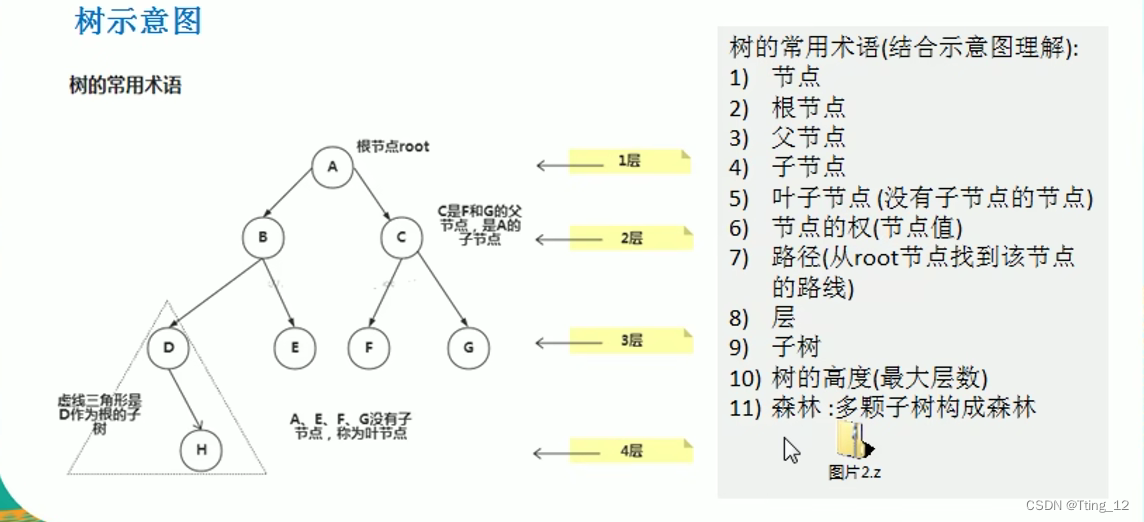
二叉树的概念
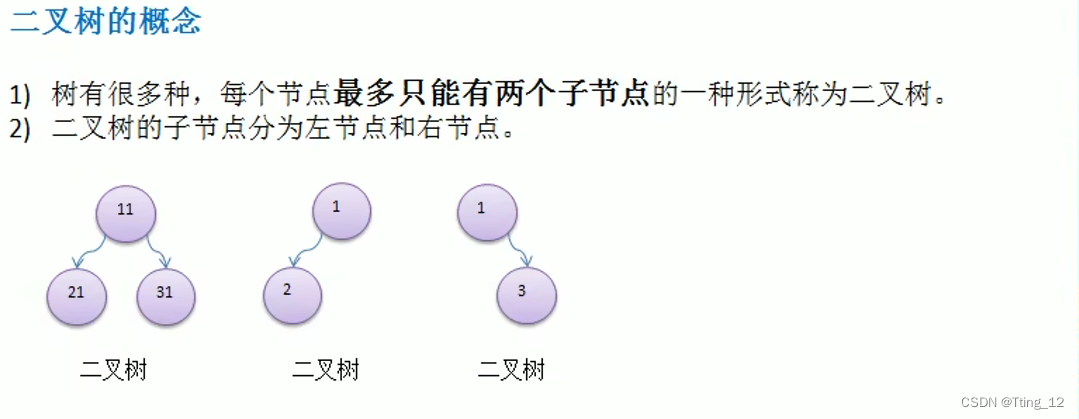
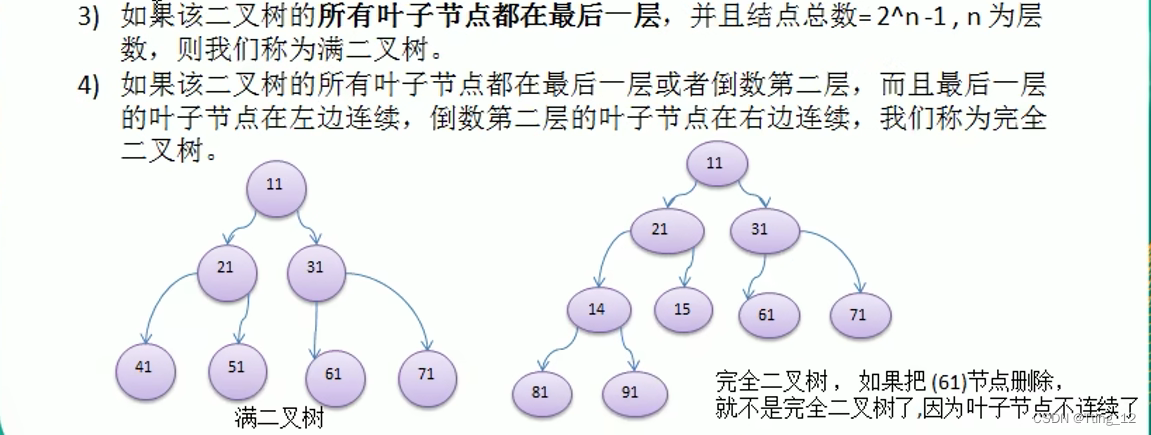
二叉树遍历的说明

1)前序遍历
先输出当前节点(初始时是root节点)
如果左子节点不为null,则递归继续前序遍历
如果右子节点不为null,则递归继续前序遍历
2)中序遍历
如果当前节点的左子节点不为null,则递归中序遍历
输出当前节点
如果当前节点的右子节点不为null,则递归中序遍历
3)后序遍历
如果当前节点的左节点不为空,则递归后序遍历
如果当前节点的右子节点不为null,则递归中序遍历
输出当前节点
使用前中后序分别遍历下面的二叉树
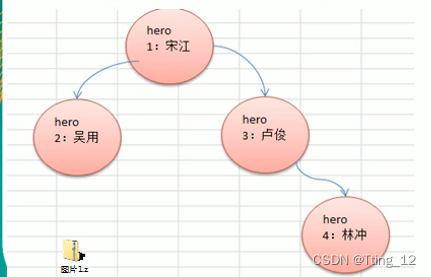
package com.tt12.tree;
public class BinaryTreeDemo {
public static void main(String[] args) {
//创建二叉树
BinaryTree binaryTree = new BinaryTree();
//创建需要的节点
HeroNode root = new HeroNode(1, "宋江");
HeroNode node2 = new HeroNode(2, "吴用");
HeroNode node3 = new HeroNode(3, "卢俊义");
HeroNode node4 = new HeroNode(4, "林冲");
//手动创建该二叉树,后面学习递归创建二叉树
root.left = node2;
root.right = node3;
node3.right = node4;
binaryTree.root = root;
//测试遍历
System.out.println("前序遍历");
binaryTree.preOrder();
System.out.println("中序遍历");
binaryTree.infixOrder();
System.out.println("后序遍历");
binaryTree.postOrder();
}
}
//定义二叉树
class BinaryTree {
public HeroNode root;
//前序遍历
public void preOrder() {
if(this.root != null) {
this.root.preOrder();
}else {
System.out.println("二叉树为空无法遍历");
}
}
//中序遍历
public void infixOrder() {
if(this.root != null) {
this.root.infixOrder();
}else {
System.out.println("二叉树为空无法遍历");
}
}
//后序
public void postOrder() {
if(this.root != null) {
this.root.postOrder();
}else {
System.out.println("二叉树为空无法遍历");
}
}
}
//先创建HeroNode节点
class HeroNode {
public int no;
public String name;
public HeroNode left;
public HeroNode right;
//构造器
public HeroNode(int no, String name) {
this.no = no;
this.name = name;
}
@Override
public String toString() {
return "HeroNode [no = " + no + ", name = " + name + "]";
}
//前序遍历的方法
public void preOrder() {
System.out.println(this);
if(this.left != null) {
this.left.preOrder();
}
if(this.right != null) {
this.right.preOrder();
}
}
//中序
public void infixOrder(){
if(this.left != null) {
this.left.infixOrder();
}
System.out.println(this);
if(this.right != null) {
this.right.infixOrder();
}
}
//后序
public void postOrder() {
if(this.left != null) {
this.left.postOrder();
}
if(this.right != null) {
this.right.postOrder();
}
System.out.println(this);
}
}二叉树的前中后序查找
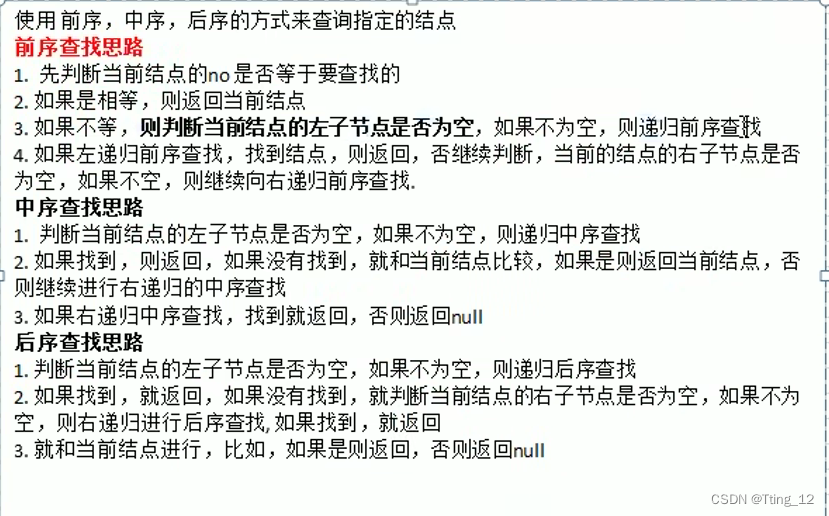
class HeroNode {
public int no;
public String name;
public HeroNode left;
public HeroNode right;
//构造器
public HeroNode(int no, String name) {
this.no = no;
this.name = name;
//前序查找
public HeroNode preOrderSearch(int no) {
if(no == this.no) {
return this;
}
HeroNode resNode = null;
if(this.left != null) {
resNode = this.left.preOrderSearch(no);
}
if(resNode != null) {
return resNode;
}
if(this.right != null) {
resNode = this.right.preOrderSearch(no);
}
return resNode;
}
//中序查找
public HeroNode infixOrderSearch(int no) {
HeroNode resNode = null;
if(this.left != null) {
resNode = this.left.infixOrderSearch(no);
}
if(resNode != null) {
return resNode;
}
if(this.no == no) {
return this;
}
if(this.right != null) {
resNode = this.right.infixOrderSearch(no);
}
return resNode;
}
//后序查找
public HeroNode postOrderSearch(int no) {
HeroNode resNode= null;
if(this.left != null) {
resNode = this.left.postOrderSearch(no);
}
if(resNode != null) {
return resNode;
}
if(this.right != null) {
resNode = this.right.postOrderSearch(no);
}
return resNode;
}
}二叉树的删除节点
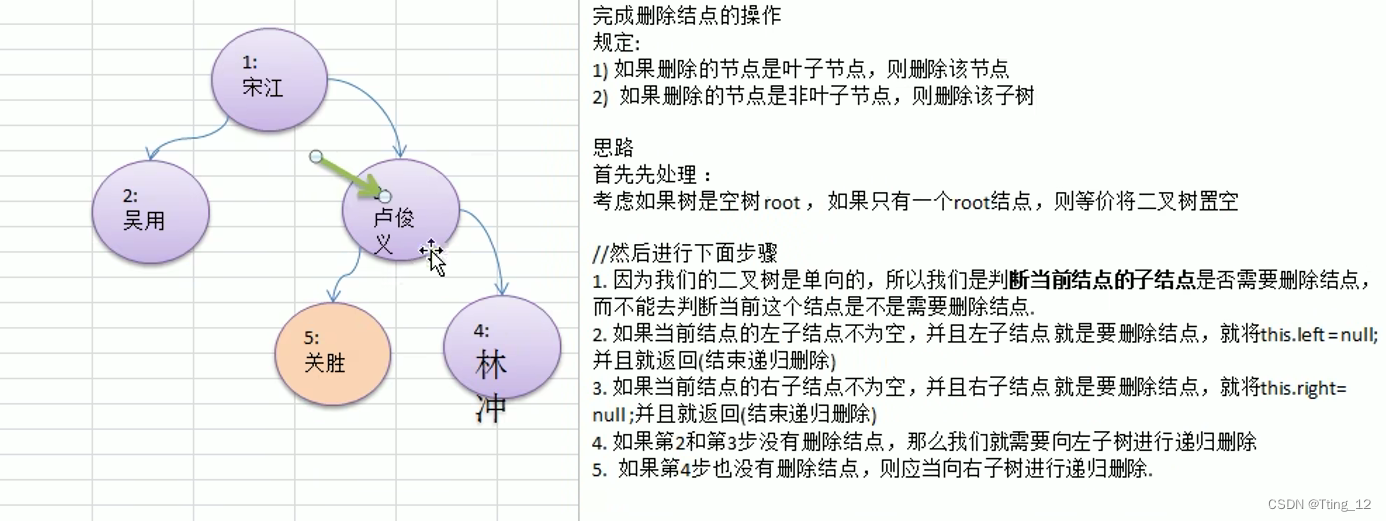
class BinaryTree {
public HeroNode root;
//删除
public void delNode(int no) {
if(root != null){
if(root.no == no) {
root = null;
}else {
root.delNode(no);
}
}else {
System.out.println("空树");
}
}
}
class HeroNode {
public int no;
public String name;
public HeroNode left;
public HeroNode right;
//构造器
public HeroNode(int no, String name) {
this.no = no;
this.name = name;
}
@Override
public String toString() {
return "HeroNode [no = " + no + ", name = " + name + "]";
}
/*
删除节点
规定:如果删除的节点是叶子节点,则删除该节点
如果删除的节点是非叶子节点,则删除该子树
*/
public void delNode(int no) {
if(this.left != null && this.left.no == no) {
this.left = null;
return;
}
if(this.right != null && this.right.no == no) {
this.right = null;
return;
}
if(this.left != null) {
this.left.delNode(no);
}
if(this.right != null) {
this.right.delNode(no);
}
}
}顺序存储二叉树
顺序存储二叉树的概念?

顺序存储二叉树的特点
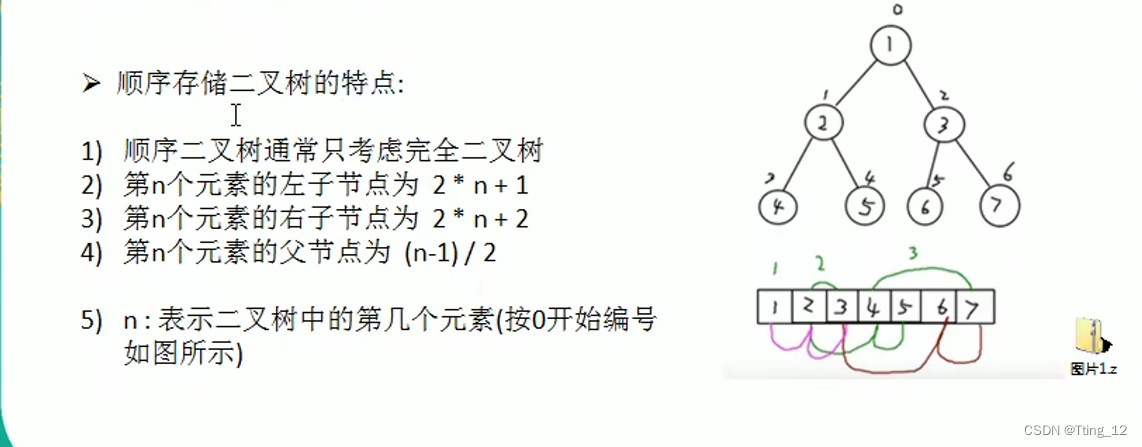
线索化二叉树
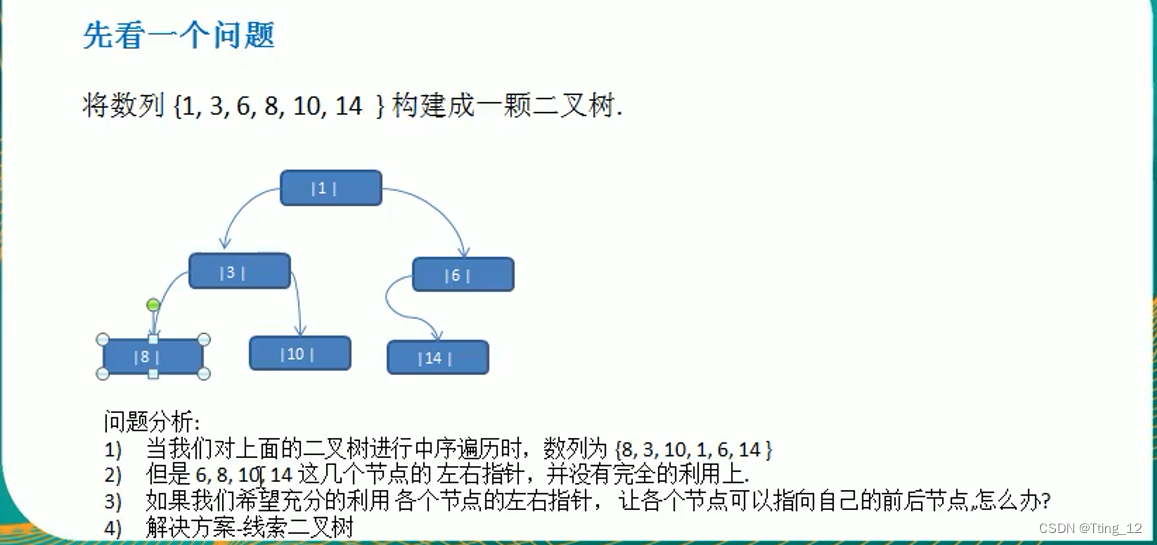
线索化二叉树基本介绍
?线索化二叉树应用案例以及遍历
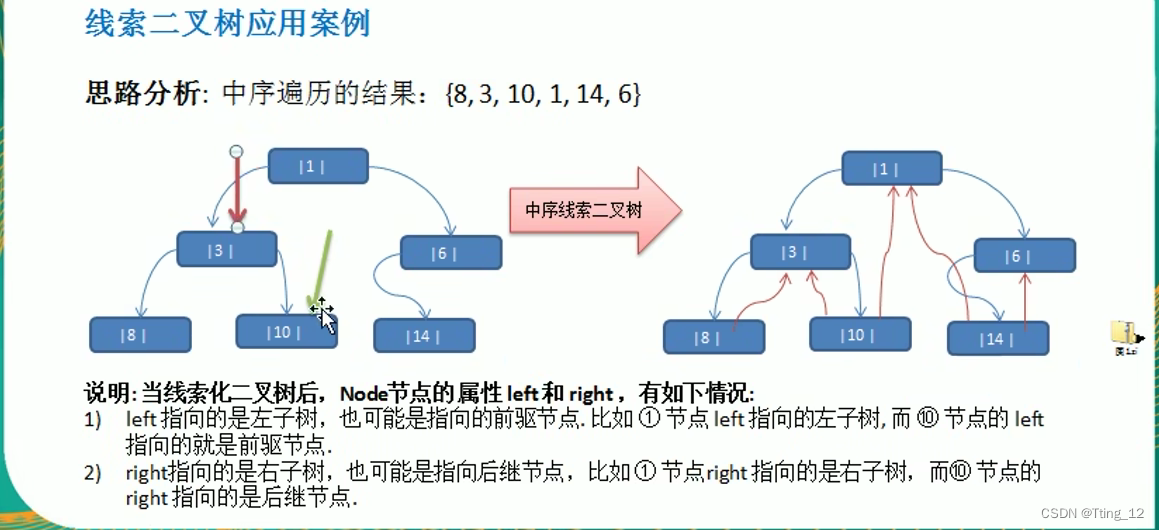

package com.tt12.tree;
public class ThreadedBinaryTreeDemo {
public static void main(String[] args) {
ThreadedHeroNode root = new ThreadedHeroNode(1,"tom");
ThreadedHeroNode node2 = new ThreadedHeroNode(3,"jack");
ThreadedHeroNode node3 = new ThreadedHeroNode(6,"smith");
ThreadedHeroNode node4 = new ThreadedHeroNode(8,"mary");
ThreadedHeroNode node5 = new ThreadedHeroNode(10,"tom");
ThreadedHeroNode node6 = new ThreadedHeroNode(14,"dim");
root.left = node2;
root.right = node3;
node2.left = node4;
node2.right = node5;
node3.left = node6;
ThreadedBinaryTree threadedBinaryTree = new ThreadedBinaryTree();
threadedBinaryTree.root = root;
threadedBinaryTree.infixOrderThreaded(root);
ThreadedHeroNode testNode = node5;
System.out.println(node5.left.toString());
threadedBinaryTree.infixOrderThreadedList();
}
}
//线索化二叉树
class ThreadedBinaryTree extends BinaryTree {
//编写对二叉树进行 【中序线索化】 的方法
//为了实现线索化,需要一个指针,指向要线索化节点的前一节点
public ThreadedHeroNode pre = null;
public void infixOrderThreaded(ThreadedHeroNode node) {
if(node == null) {
return;
}
//先线索化 左子树
infixOrderThreaded((ThreadedHeroNode) node.left);
//处理当前节点的前驱节点
if(node.left == null) {
node.left = pre;
node.leftType = true;
}
//处理后继节点
if(pre != null && pre.right == null) {
pre.right = node;
pre.rightType = true;
}
//每处理一个节点后,让当前节点是下一个节点的前驱节点
pre = node;
//右子树
infixOrderThreaded((ThreadedHeroNode) node.right);
}
//中序遍历线索化二叉树的方法
public void infixOrderThreadedList() {
ThreadedHeroNode node = (ThreadedHeroNode) root;
while(node != null) {
while(node.leftType == false) {
node = (ThreadedHeroNode) node.left;
}
System.out.println(node.toString());
while(node.rightType == true) {
node = (ThreadedHeroNode) node.right;
System.out.println(node);
}
node = (ThreadedHeroNode) node.right;
}
}
}
class ThreadedHeroNode extends HeroNode {
//说明:
//如果leftType == 0(false) 表示指向左子树 如果== 1(true)表示指向前驱节点
//如果rightType == 0 表示指向右子树,== 1 表示指向后继节点
public boolean leftType;
public boolean rightType;
public ThreadedHeroNode(int no, String name) {
super(no, name);
}
}
赫夫曼树
基本介绍

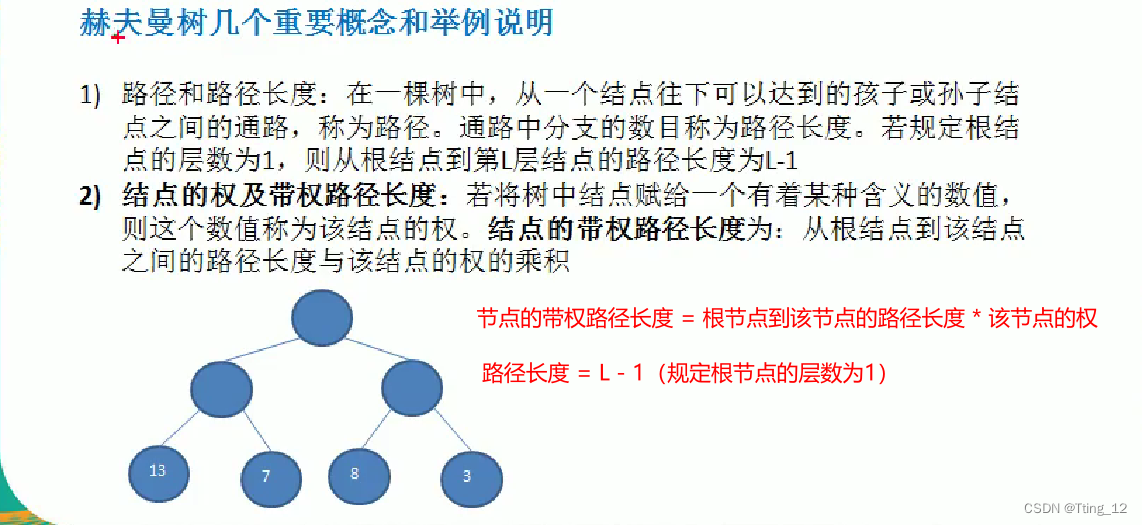
?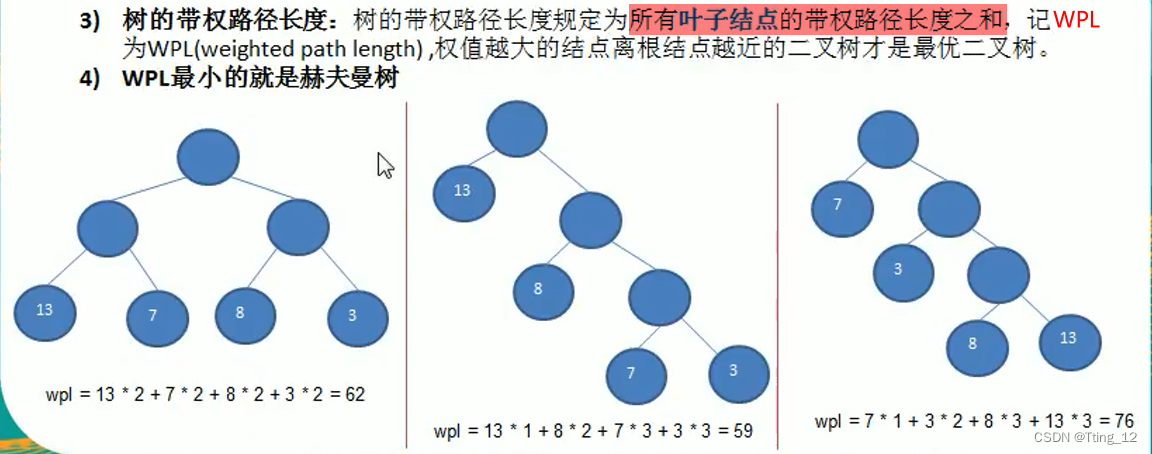
?构建赫夫曼树思路
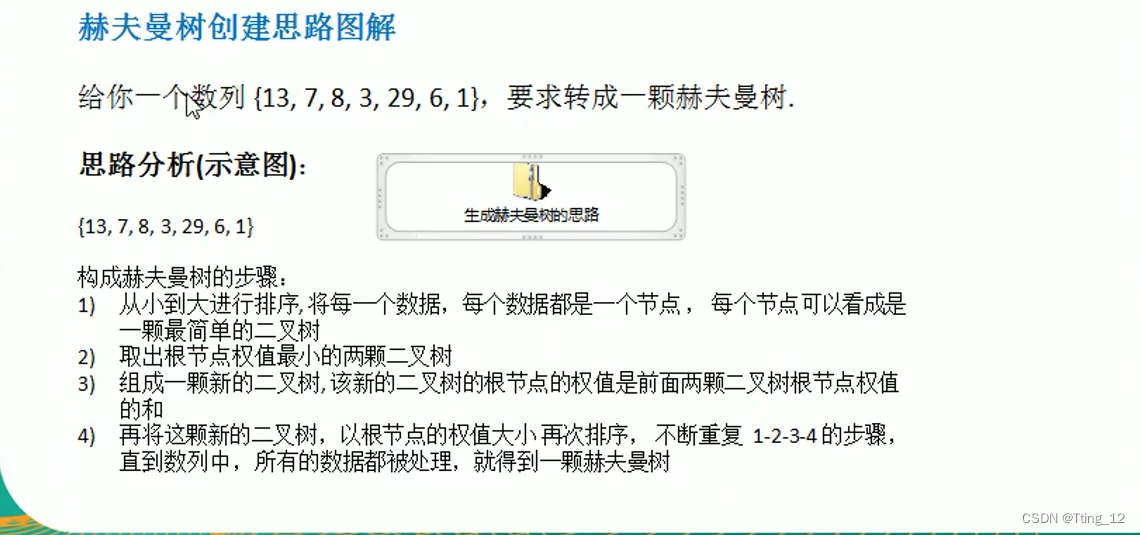
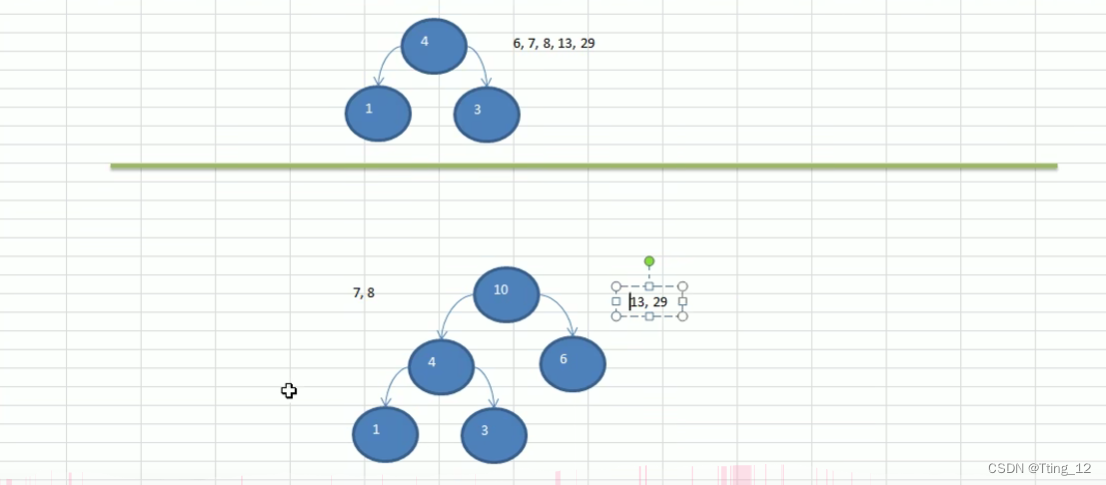
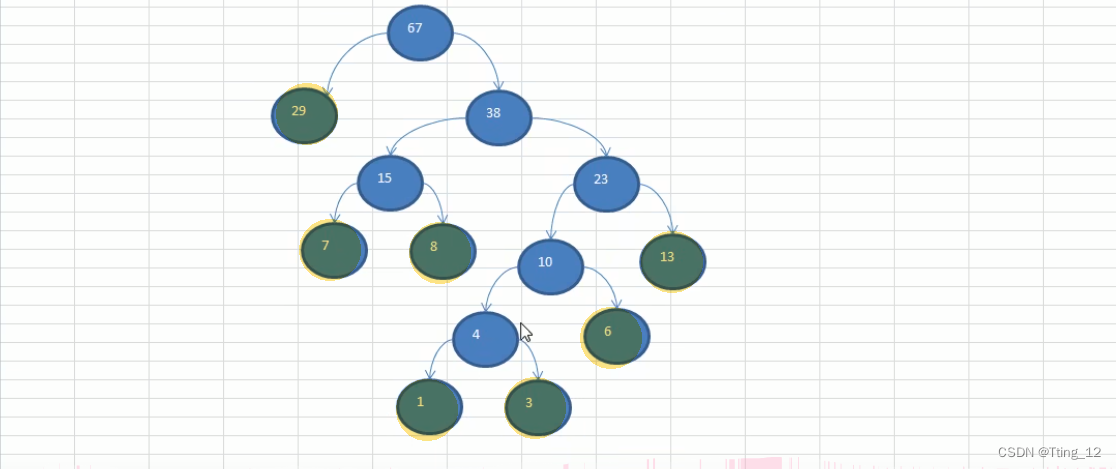
package com.tt12.huffmantree;
import java.util.ArrayList;
import java.util.Collections;
import java.util.List;
public class Huffmantree {
public static void main(String[] args) {
int arr[] = {13, 7, 8, 3, 29, 6, 1};
//测试赫夫曼树已经建成
}
//创建赫夫曼树的方法
public static Node createHuffmanTree(int arr[]) {
//遍历arr数组,将每个元素构建成一个Node,将这个Node放入ArrayList中
List<Node> nodes = new ArrayList<Node>();
for(int value : arr) {
nodes.add(new Node(value));
}
while (nodes.size() > 1) {
//排序 从小到大
Collections.sort(nodes);
//取出根节点权值最小的两颗二叉树(一个节点也可以看作一颗二叉树)
Node leftNode = nodes.get(0);
Node rightNode = nodes.get(1);
Node parent = new Node(leftNode.value + rightNode.value);
parent.left = leftNode;
parent.right = rightNode;
//从List中删除已经处理过的Node
nodes.remove(leftNode);
nodes.remove(rightNode);
//将parent加入List
nodes.add(parent);
//重新排序
Collections.sort(nodes);
}
return nodes.get(0);
}
}
//创建节点类
//为了让Node对象支持排序 让Node实现Comparable<Node>接口
class Node implements Comparable<Node> {
int value; //节点权值
Node left; //指向左子节点
Node right; //指向右子节点
public Node(int value) {
this.value = value;
}
public String toString() {
return "Node [value = " + value + "]";
}
public int compareTo(Node o) {
//表示从小到大排序
return this.value - o.value;
}
}赫夫曼编码
基本介绍
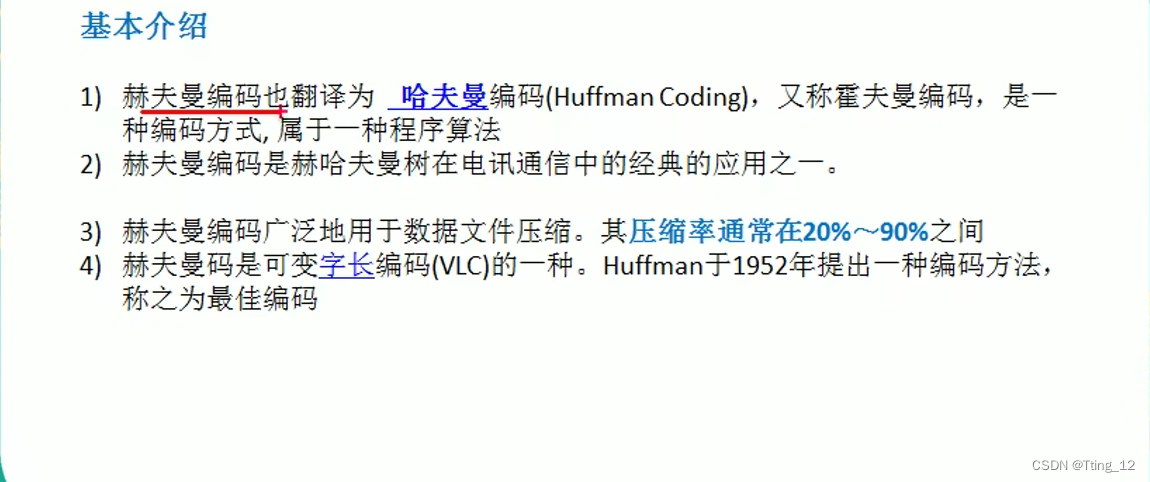
通讯领域中信息的处理方式1——定长编码
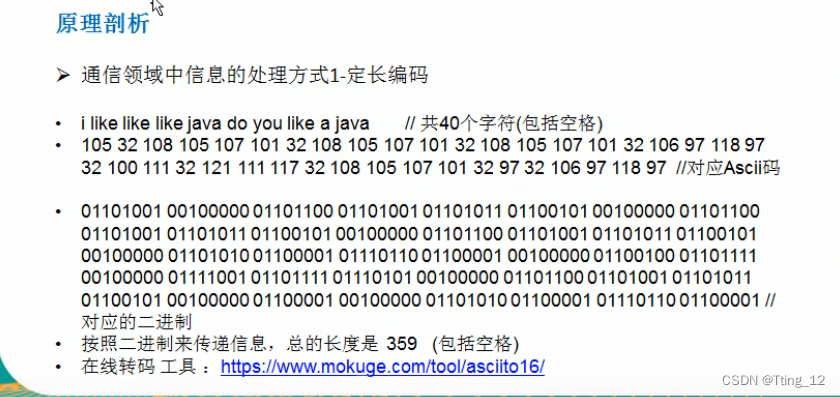
通讯领域中信息的处理方式2——变长编码
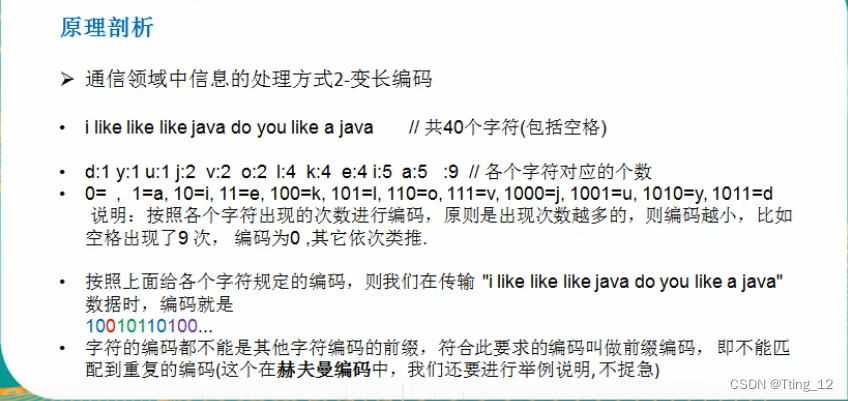
?赫夫曼编码的原理剖析
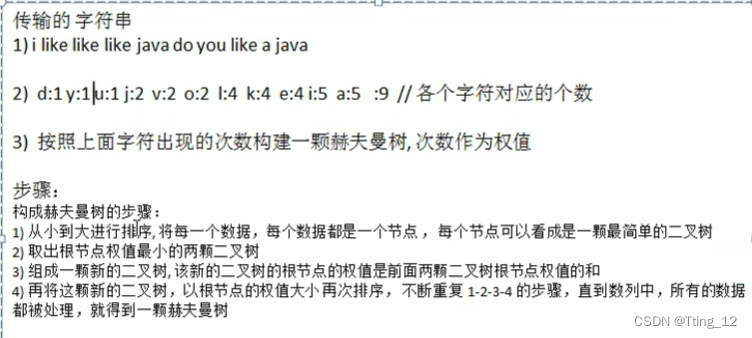
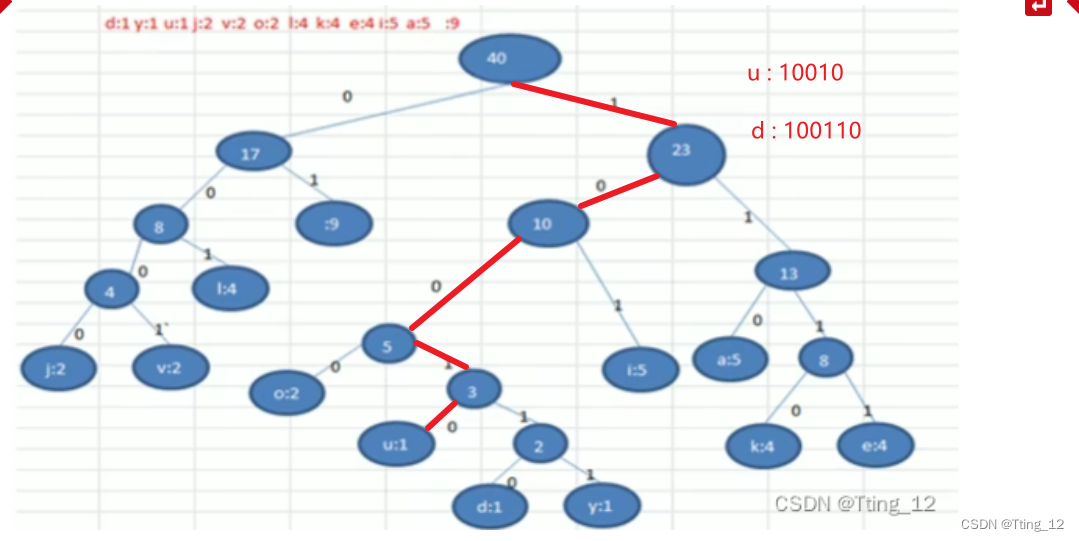
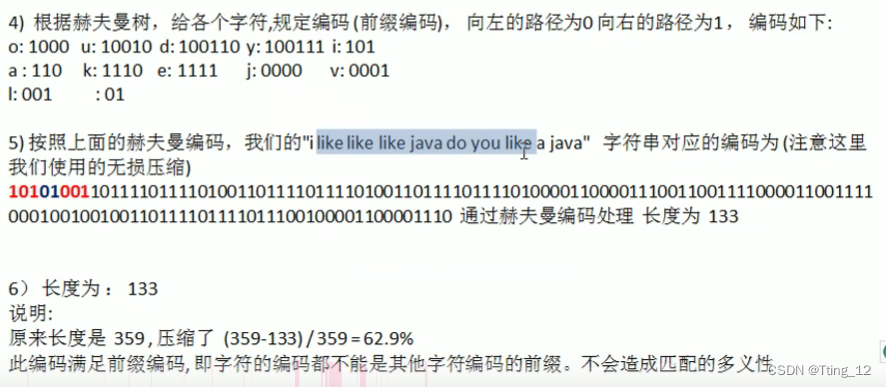
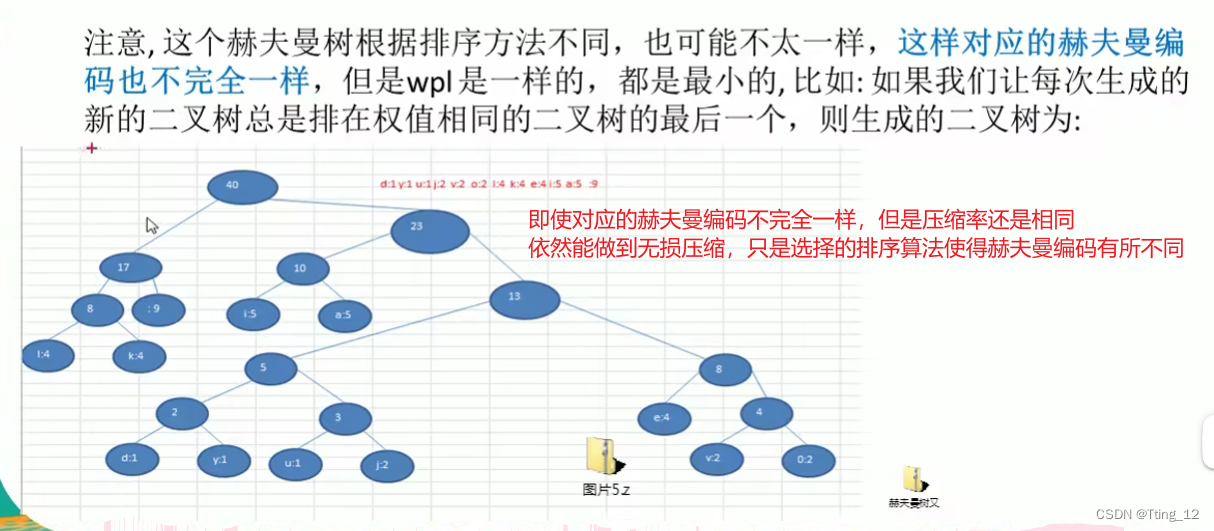 ?创建赫夫曼树
?创建赫夫曼树
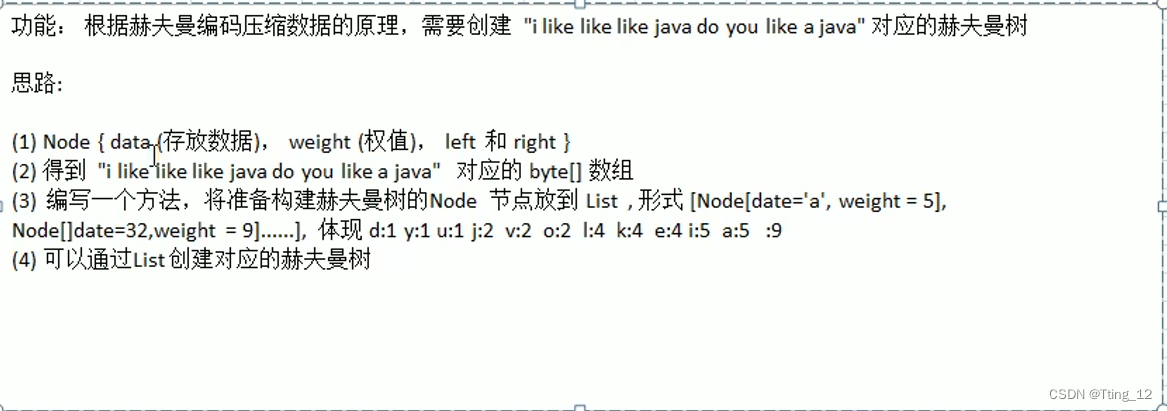

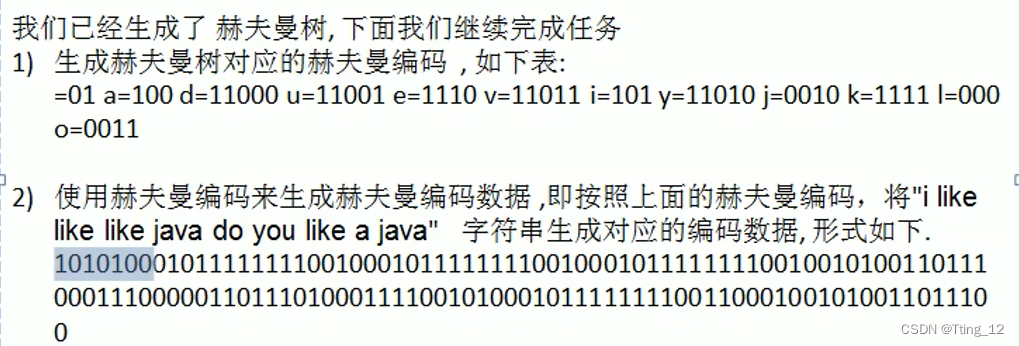
?
